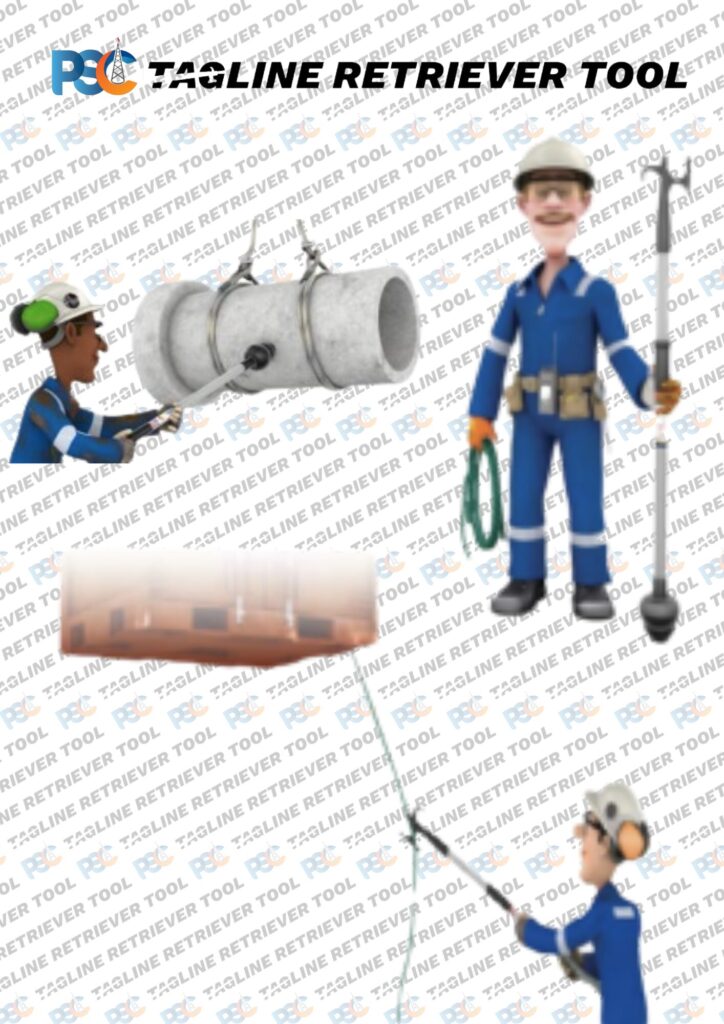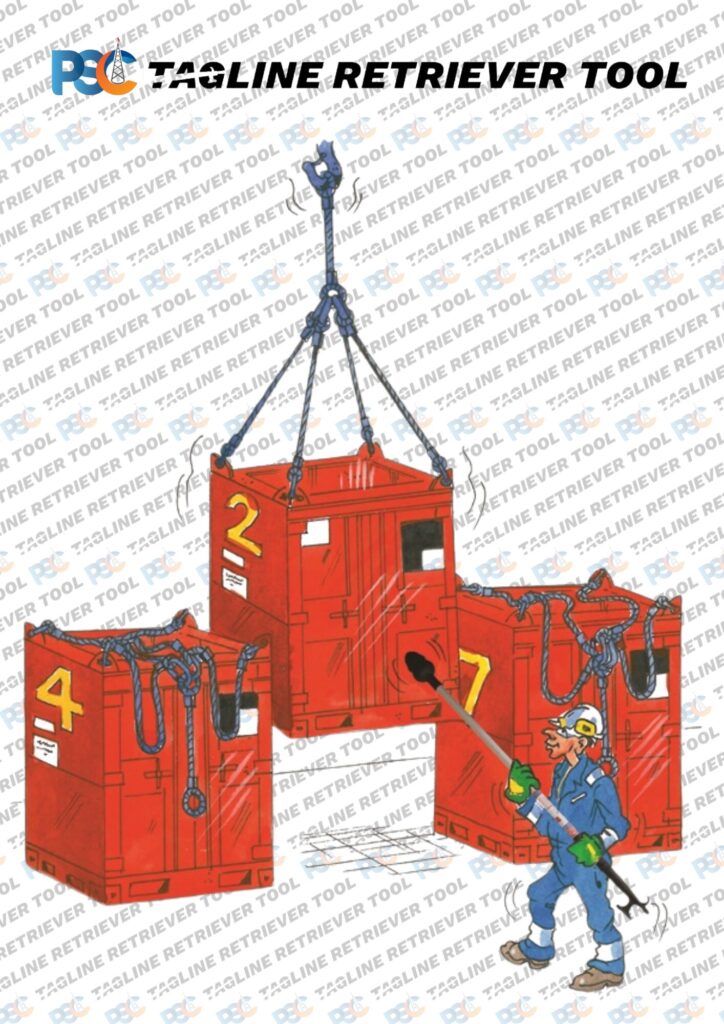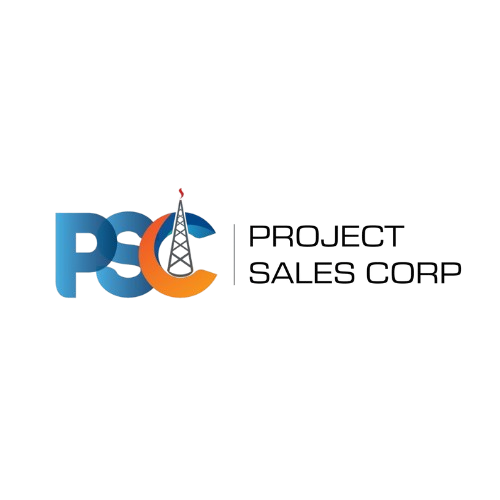
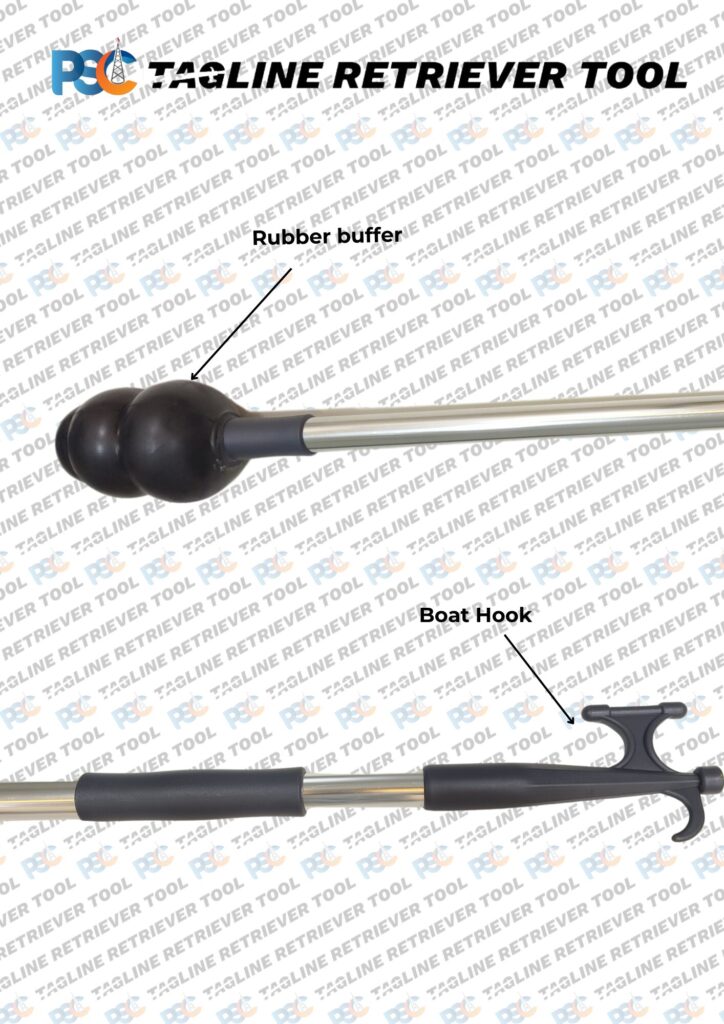
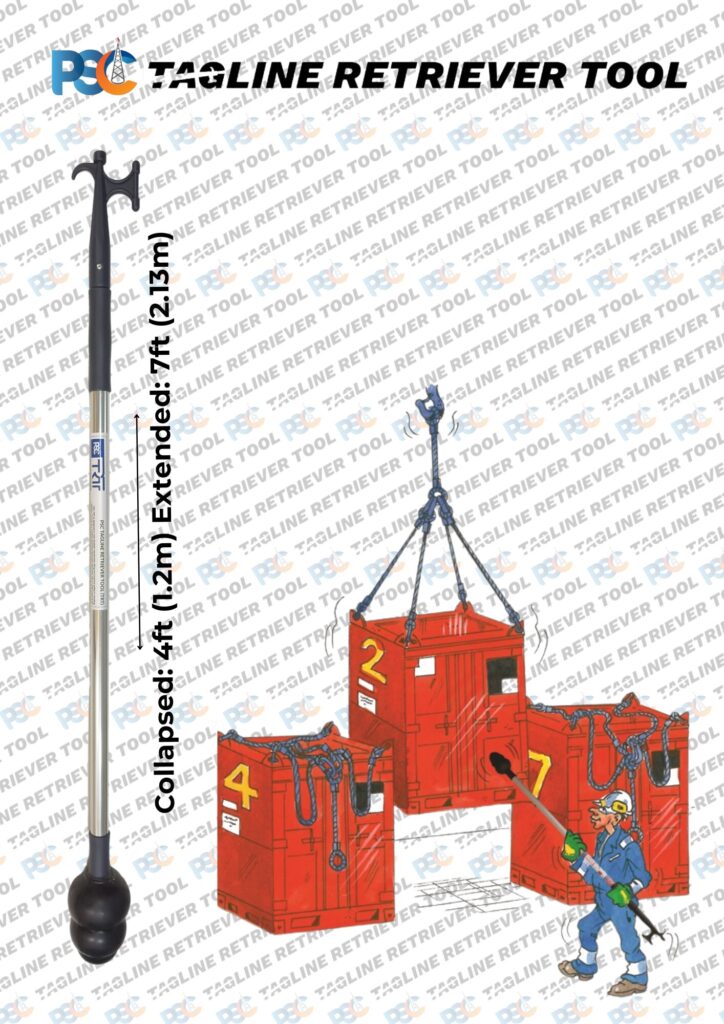


PSC Tagline Retriever Tool – Injuries from handling, lifting, or carrying loads is one of the most common types of accident in the offshore industry. The successful management of these risks is achieved through the introduction of Hands-free safety tools.
Sometimes in the course of their duties, riggers cannot avoid getting under a suspended load, or at least in the load shadow( the area under the load into which that load could fall and cause fatality), and it is usually because they need to catch onto the tagline to guide the lifted load into landing position.
The PSC Tagline Retriever Tool allows a worker to be at a much safer distance from the load when suspended and freely grasp and handle the tagline while remaining outside the line of fire of objects and the suspended load.
The rubber buffer is used to push against suspended loads to guide them, especially when landing loads in tight or congested spaces. Once again, this allows the operator to remain a safe distance from the load until it has landed
PSC Tagline Retriever Tool : Part Number
#PSC-TRT
FEATURES
The hook end of the tool is used at full extension, approximately 2.1 meters (7 feet), to retrieve taglines hanging vertically. This allows load handlers to avoid getting too close to suspended loads, reducing the risk of accidents.
The rubber buffer is utilized to push against suspended loads, guiding them safely into tight or congested spaces. This feature enables operators to remain at a safe distance from the load until it is securely landed.
The poles are typically fully retracted to ensure rigidity when guiding loads, with a length of about 1.2 meters (4 feet). They can also be used half-extended if needed, though excessive pressure may cause them to telescope in. This flexibility allows for adaptable use in various scenarios while maintaining safety standards.
APPLICATIONS
These tools help manage taglines effectively when ropes start to tangle, preventing further complications and ensuring smoother operations.
They enable operators to direct loads from a safe distance, providing better control over the movement of suspended loads.
By keeping operators away from the line of danger, these tools significantly reduce the risk of accidents and injuries associated with handling heavy or unstable loads.
